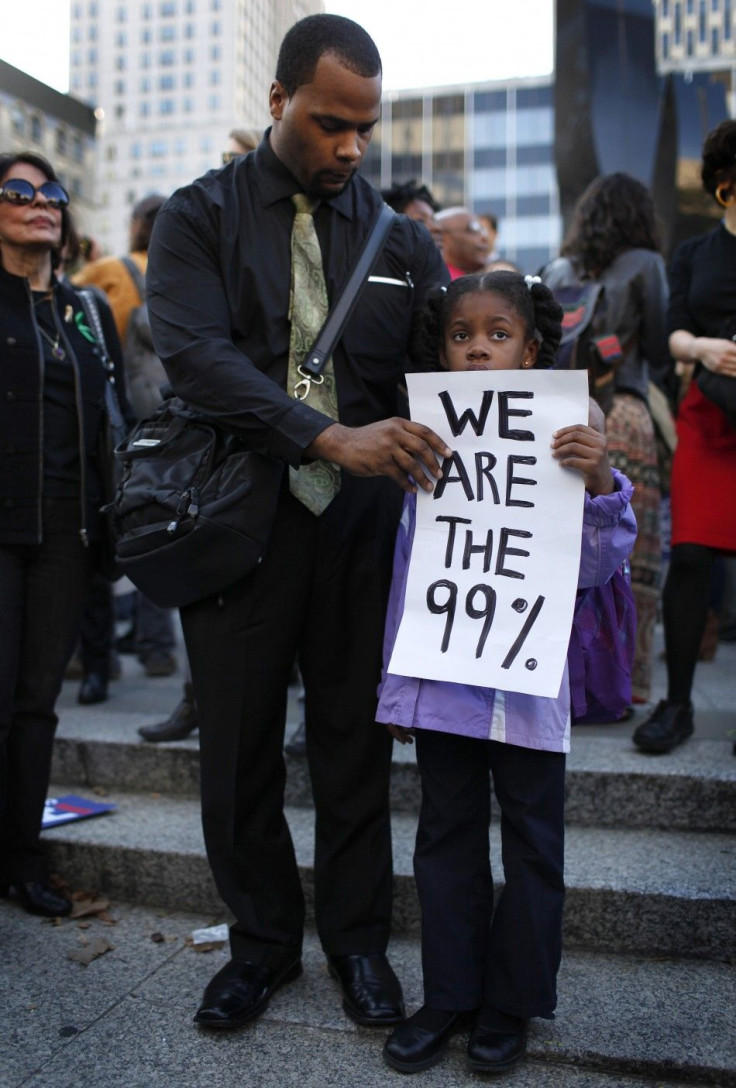Occupied Wall Street Journal: Movement Gaining Traction, Launches Newspaper as Wall Street Gets Annoyed
ANALYSIS

As the Occupy Wall Street movements gets traction by accomplishing its goal -- persistence that finally gets the attention of Wall Street and the powers-that-be in the financial world -- the creativity is also spawning interest. Among the latest moves by protesters is the groups own newspaper that's a name-play on another popular publication.
The Occupied Wall Street Journal has been published since Saturday, with an initial press run of 50,000. The press run has since been up to 70,000, as protesters hand out the newspaper in Lower Manhattan, in and along the route where protesters live and march on a daily basis since beginning the movement in September.
The Occupy Wall Street protest, now becoming a movement that has spread to other cities in the U.S. and abroad, is designed to bring attention to what participants say are inequities in the economic system. The Occupied Wall Street Journal got its start through the online fund-raising platform Kickstarter. Organizers say the paper is designed to let the general public know what is actually going on with the movement.
Published in a four-page broadsheet format, the Occupied Wall Street Journal launched with a story by Arun Gupta, 46, who is one of the organizers of the newspaper project, titled The Revolution Begins at Home.
By Thursday morning, after one major Occupy Wall Street march late Wednesday afternoon that drew an estimated 10,000 participants including support from many unions in the New York area and another smaller march that resulted in a reported 28 arrests and accusations of police brutality, some workers and residents of New York's financial district were feeling like the revolution was hitting too close to home.
Why is (New York) City allowing this? asked one MTA 4 Train passenger Thursday morning, during his commute to work on Wall Street. Bloomberg should stop this. It has gotten out of hand.
The passenger explained how he had to get his driver to meet him at a location several blocks away from Wall Street and Broadway, the usual pick up spot, on Wednesday evening after work because of the massive protest march crowd.
Another passenger claimed it was U.S. President Barack Obama who should do something about the growing crowds and disruption of life and work in the Wall Street area of Lower Manhattan. He promised them change, the passenger said. Now, he needs to tell them he's sorry.
Such is the mood among many who live and work in the area as tensions rise as the protest, which has called for 20,000 to occupy Wall Street for several months continues to grow. Tensions are rising among protesters, who feel they must publish their own paper to get their voice and concerns out, and tensions are rising among those who claim their daily lives are being disrupted by the crowds.
Many, however, are joining forces with the Occupy Wall Street movement, like the unions of middle class workers who say the share the same mission -- getting the attention of the establishment.
It's really simple. These young people on Wall Street are giving voice to many of the problems that working people in America have been confronting over the last several years, Larry Hanley, international president of the Amalgamated Transit Union, which has 20,000 members in the New York area, told CNN.
© Copyright IBTimes 2024. All rights reserved.





















